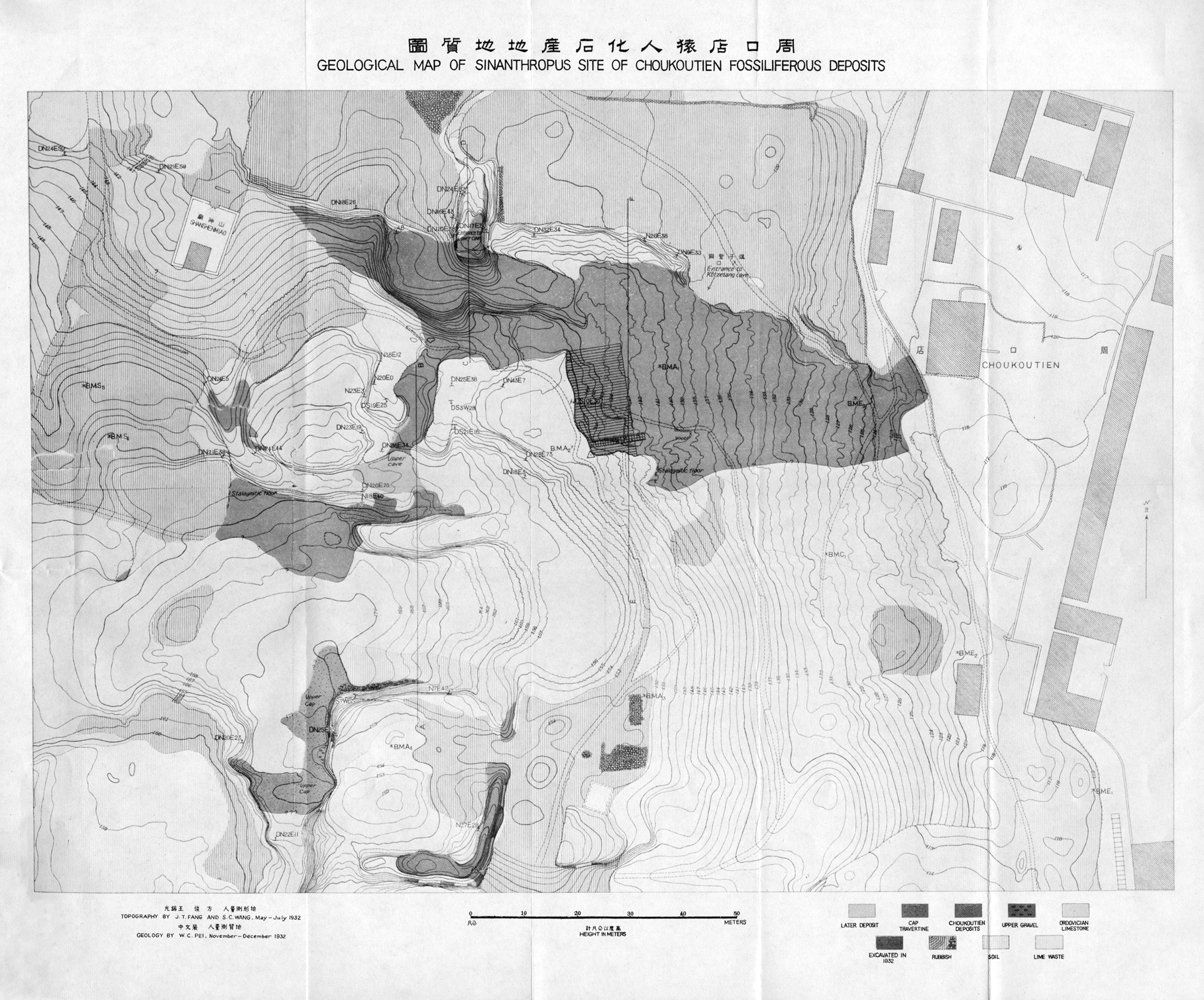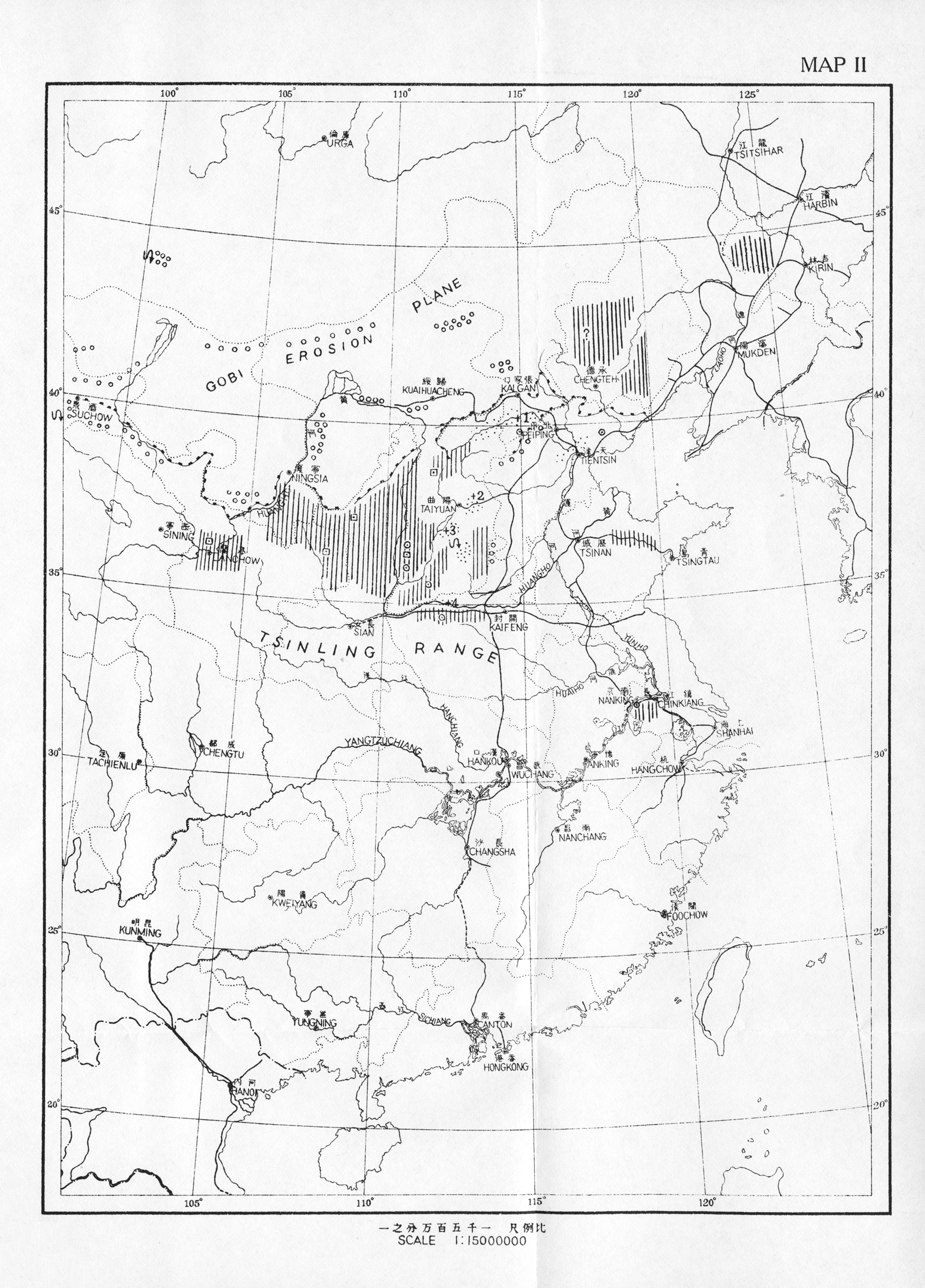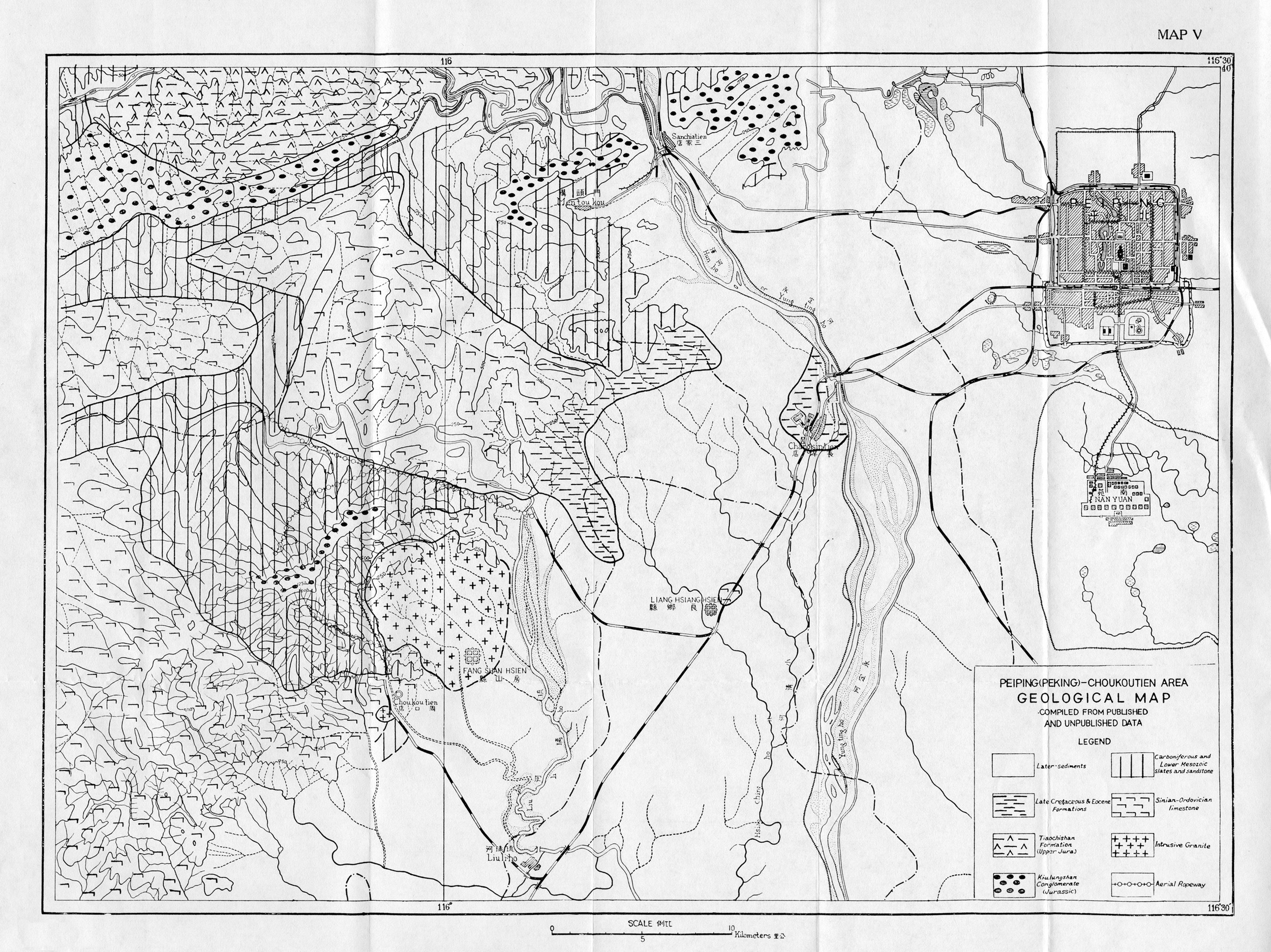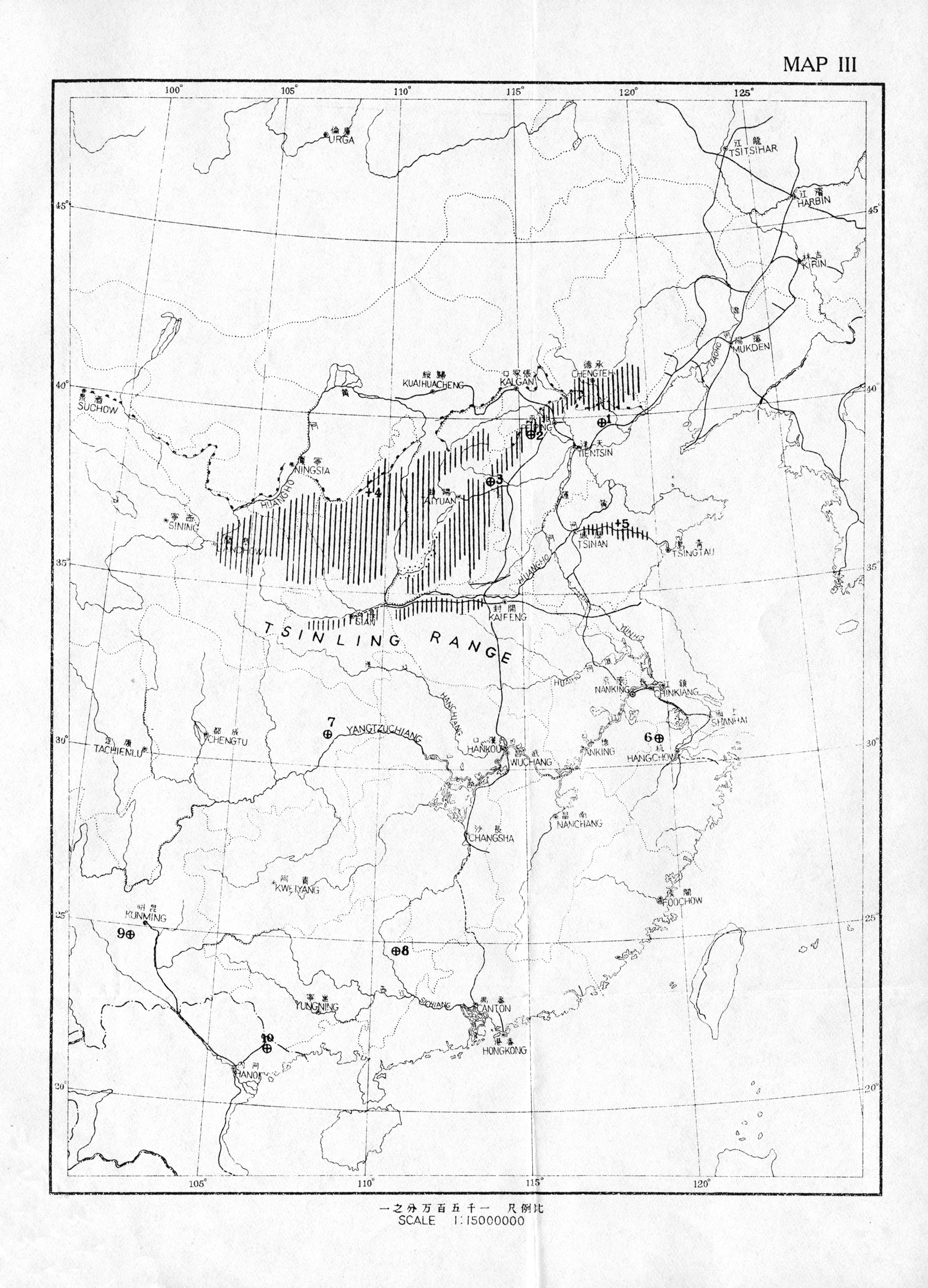Fossil Man in China, 1933: The publication that summarizes the geology, paleoanthropology, archaeology, and excavations at Zhoukoudian through 1933.
Publication of the geologic maps is one of many early 20th century means of data-sharing. With the maps, and the detailed descriptions of the fossils and artifacts, readers can better parse the geologic context for a site as extensive as Zhoukoudian.
(Click through the gallery below for the five geologic maps.)
Fossil Man in China includes five large-format, detailed geological maps for Zhoukoudian and the surrounding areas.
























